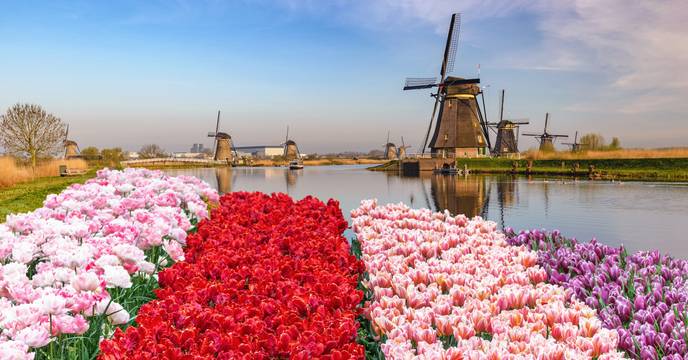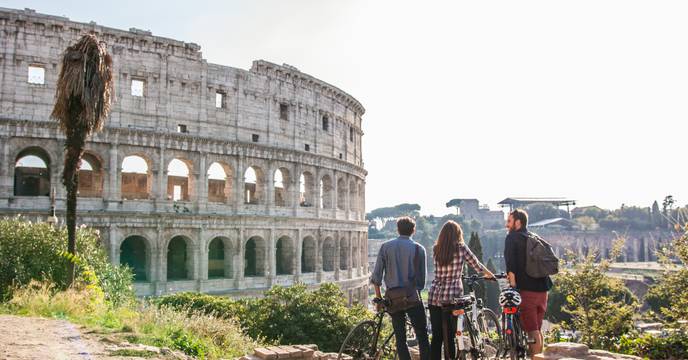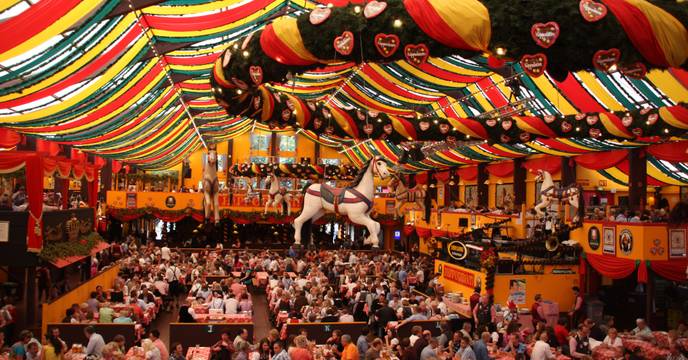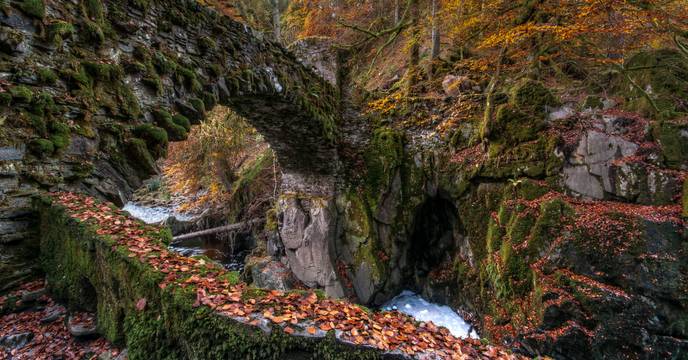
Best Time to Visit Europe
Table of contents
Spring in Europe
Fall in Europe
Monthly activities and tourists
Seasonal guide to prices
Travel companies in Europe
FAQ
With its vast cultural tapestry and diverse landscapes, Europe is a treasure trove of experiences all year-round. However, the best time to visit Europe ideally is late spring (April to June) or early fall (September to October). These periods offer moderate weather, fewer crowds, and the opportunity to explore cities like Rome, Paris, Barcelona, and Amsterdam in their prime.
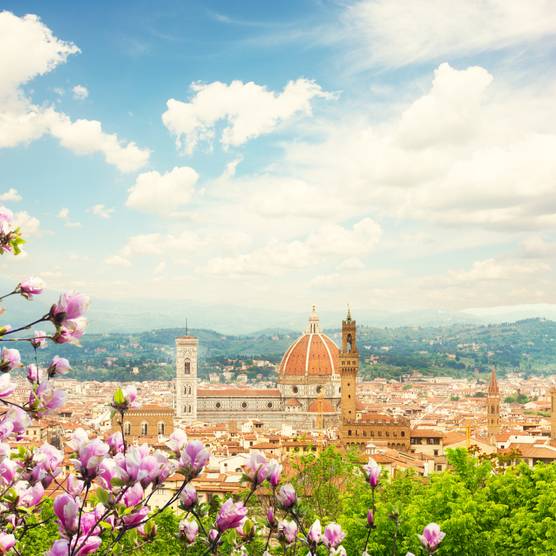
Best time to visit Europe: Spring
Mild weather: Enjoy comfortable temperatures – perfect for sightseeing and outdoor adventures.
Lesser crowds: Experience popular attractions without the rush of peak tourist season.
Cultural events: Europe has a rich cultural calendar, and you’ll get to see the best of it, from spring flower festivals to music festivals.
Budget-friendly: Save with off-peak travel rates for flights and accommodations.
Nature at its best: Enjoy the blooming flowers in spring and milder weather in the mountains.
Outdoor activities: From hiking and cycling to kayaking and surfing, Europe has a huge number of outdoor activities – and spring offers the ideal conditions to enjoy them.
Top things to do and see in Europe during spring
Three essentials to pack for your Europe trip during spring
Layers
The weather can be variable in spring, so layering is key. Be prepared for everything with a mix of short and long-sleeved tops, and a light jacket or sweater.
Comfortable shoes
Whether it's cobblestone streets or countryside trails, a good pair of walking shoes is a must.
Rain gear
Don’t let the rain ruin your trip! A compact umbrella or light rain jacket is essential for the occasional spring shower.
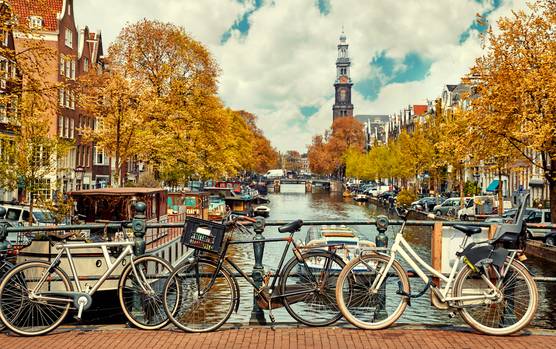
Best time to visit Europe: Autumn/Fall
Why fall is the second best time to visit Europe:
Fewer crowds: With summer tourists gone, you can explore Europe's gems at a more leisurely pace.
Mild weather: The scorching summer heat gives way to more comfortable – but still pleasant – temperatures, perfect for outdoor adventures.
Autumn festivals: Experience authentic European culture through autumn festivals, like Germany's Oktoberfest.
Affordable rates: Enjoy lower accommodation and flight prices as the high season ends.
Colorful landscapes: Marvel at the dramatic change in foliage, creating beautiful scenes across the continent from Italy to Scotland.
Fresh produce: Autumn harvests bring food festivals and markets brimming with fresh, local produce.
Top things to do and see in Europe in fall/autumn
Three essentials to pack for your Europe trip in autumn/fall
Waterproof jacket
A waterproof and windproof jacket to protect against the unpredictable weather of the European autumn.
Warm clothes
Thermal layers and a warm scarf for chilly mornings and evenings, ensuring comfort as you roam Europe's historical cities and countryside.
Waterproof shoes
A sturdy, reliable pair of waterproof boots, perfect for walking on cobblestone streets or exploring nature trails amidst the fall foliage.

Europe during peak season: summer
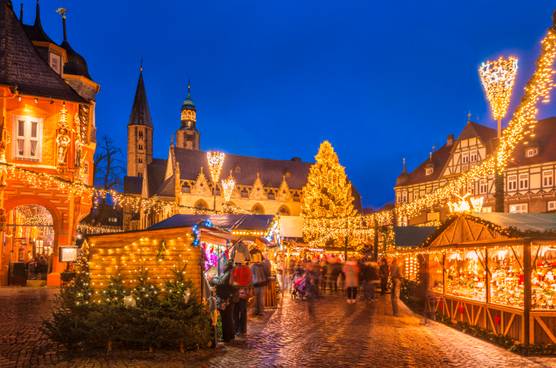
Europe outside the peak times: winter
Overview of activities and tourists in Europe per month
Europe's charm varies with each season, with a huge number of experiences to enjoy all year round. Summer sets the stage for music festivals and beach escapades, while winter invites you to explore enchanting Christmas markets and ski resorts. Autumn is perfect for wine harvests and scenic hikes, while spring is all about flower festivals and city tours.
| Month | Popular Activities | Tourist Volume | Season |
|---|---|---|---|
| January | Skiing, Northern Lights |
Low
| Low season |
| February | Carnivals, Skiing |
Low
| Low season |
| March | City Tours, Flower Festivals |
Moderate
| Shoulder season |
| April | City Tours, Flower Festivals |
Moderate
| Shoulder season |
| May | Hiking, City Tours |
High
| High season |
| June | Music Festivals, Beach Escapades |
High
| High season |
| July | Music Festivals, Beach Escapades |
High
| High season |
| August | Hiking, Wine Tasting |
High
| High season |
| September | Wine Harvests, Scenic Hiking |
Moderate
| Shoulder season |
| October | Wine Harvests, Scenic Hiking |
Moderate
| Shoulder season |
| November | City Tours, Wine Tasting |
Low
| Low season |
| December | Christmas Markets, Skiing |
Low
| Low season |
Europe adventures
By experience
The best time to visit Europe: A seasonal guide to prices
The cost of traveling in Europe varies with the seasons. Prices soar in summer, which is peak season, while winter is the low season – meaning you can get cheaper deals. Spring and autumn are considered shoulder seasons, offering moderate rates. With TourRadar, you can find an adventure to suit your budget at any time of the year.
High Season (June - August)
Prices: The high season is the most expensive time to visit Europe due to the influx of tourists.
Weather: Enjoy long, sunny days and warm temperatures, ideal for beach holidays and outdoor adventures.
Who should book: If you don't mind crowds and higher prices, summer is perfect for experiencing Europe's vibrant festivals and outdoor activities.
Shoulder Season (April - June, September - October)
Prices: The shoulder season offers a great balance between cost and comfort, with prices lower than the high season.
Weather: With pleasant weather and fewer crowds, it's an ideal time for sightseeing and exploring.
Who should book: If you're seeking a balance between good weather, manageable crowds, and reasonable prices, the shoulder season is the best time to visit Europe.
Low Season (November - March)
Prices: Travel costs are at their lowest, with great deals on flights, accommodation, and tours.
Weather: Expect colder temperatures and shorter days. Some regions may have snowfall.
Who should book: Ideal for budget travelers and those who love winter sports or prefer quieter sightseeing.
Top-rated operators for Europe tours
What people ask about Europe
What is the best time to visit France?
The best time to visit France is from April to June and September to November. You’ll get milder weather, fewer tourists, and vibrant local festivals. The summer crowds have thinned, letting you experience the authentic charm of French cities and countryside.
When is the best time to visit Italy?
The best time to visit Italy is during the spring (April to June) and fall (September to October). In the shoulder seasons, you’ll get pleasant temperatures, fewer tourists, and vibrant landscapes meaning you can enjoy the cultural and culinary delights without the intense summer heat and crowded attractions.
What is the ideal time to visit Spain?
The ideal time to visit Spain is from March to May and September to November. Spain can be uncomfortably hot in the summer, but in the shoulder seasons, the weather is comfortable, and you can enjoy outdoor activities, cultural festivals, and fewer tourists. Explore Spain's rich heritage and beautiful landscapes in pleasant conditions.
When should I visit Germany for the best experience?
The best time to visit Germany is from May to September. These months offer warm weather, ideal for exploring cities, castles, and the countryside. Enjoy festivals like Oktoberfest in September and experience the vibrant local culture and historic sights at their best.
What is the best time to visit Greece?
The best time to visit Greece is from April to early November, with May, June, and September being the optimal months. These periods offer warm, sunny weather that is perfect for exploring ancient ruins, beautiful beaches, and charming islands without the peak summer crowds – and without the scorching sun of July and August.
When is the best time to travel to the United Kingdom?
The best time to visit the United Kingdom is from late spring (May) to early autumn (September). These months provide mild weather, longer daylight hours, and plenty of exciting cultural events. Experience the beauty of the British countryside, historic landmarks, and vibrant cities during this pleasant period.
What are the best times to visit Europe for outdoor activities?
The best times to visit Europe for outdoor activities are late spring (May-June) and early fall (September-October). These periods offer mild weather, ideal for hiking, biking, and exploring national parks. Summer is great for beach activities, while winter is perfect for skiing and snowboarding.
What are the best times to visit Europe for festivals?
The best times to visit Europe for festivals are during the summer and fall. Major events include Oktoberfest in Germany (September/October), La Tomatina in Spain (August), and the Edinburgh Festival Fringe in Scotland (August). Experience Europe's rich cultural traditions during these vibrant times.
24/7 Customer Support
Our team of experienced tour specialists have traveled to hundreds of countries around the globe and have decades of first-hand travel experience to share. Contact us now to have all of your tour-related questions answered!
More about Europe
- Western Europe (9594)
- August 2025 (8322)
- September 2025 (8264)
- May 2025 (8149)
- June 2025 (8134)
- July 2025 (7753)
- Family (7357)
- April 2025 (7328)
- Fully Guided (7316)
- October 2025 (7113)
- Mediterranean (6477)
- March 2025 (5198)
- November 2025 (3853)
- Historical (3725)
- December 2025 (3269)
- Balkans (3030)
- In-depth Cultural (3014)
- Central Europe (2900)
- Christmas & New Year (2755)
- Private (2399)
- February 2026 (2306)
- January 2026 (2210)
- Self-Guided (1845)
- 10 Day (1735)
- River Cruise (1657)
- Coach / Bus (1388)
- 2 Week (1200)
- UK and Great Britain (1109)
- Nordic / Scandinavia (1017)
- 3 Week (901)
- 7 Day (753)
- Hiking & Trekking (730)
- Eastern Europe (687)
- Bicycle (685)
- Active (456)
- Intl. Flights Included (431)
- London (425)
- Sailing (384)
- Self Drive (383)
- Wine tasting (363)
- Self-Guided Cycling (344)
- Amsterdam (302)
- Budapest (261)
- Baltic (259)
- Madrid (214)
- Rome (192)
- Island Hopping (189)
- 4 Week (188)
